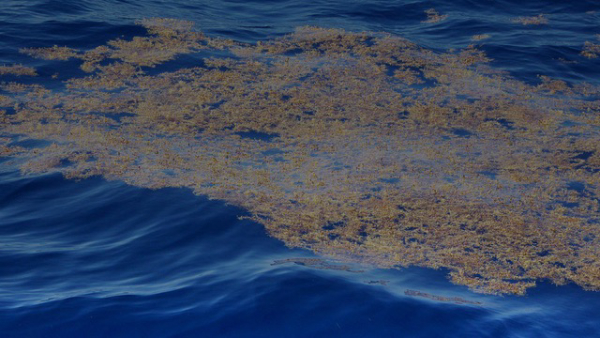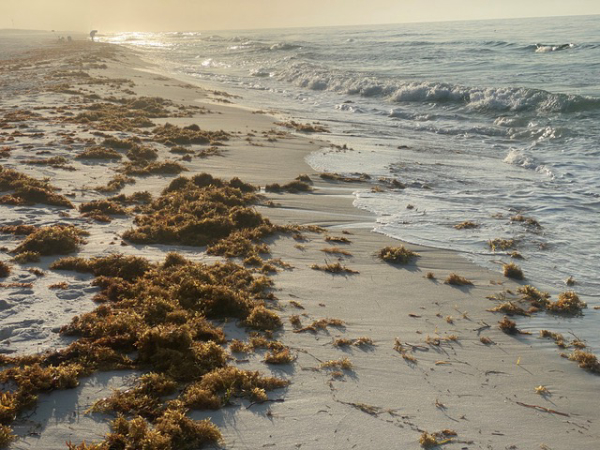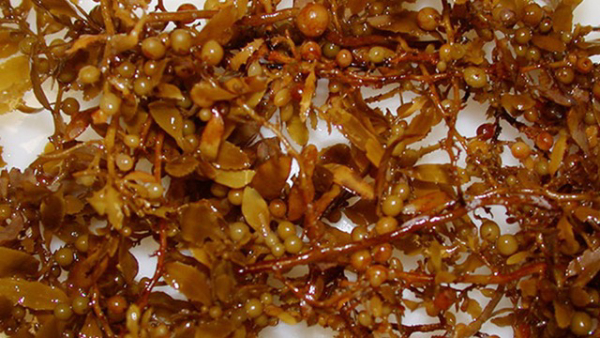The Good and Bad of Floating Weeds
It used to be that we went looking for sargassum.
Find a weedline of this gold-brown floating stuff and you find mahi, sailfish, wahoo and maybe even marlin. The gamefish hung on the weeds, which formed in the current breaks, because it was full of baitfish.
Now, sargassum is coming looking for us.

A massive blob of sargassum thousands of miles long is headed to Florida, the Caribbean and eventually the Gulf of Mexico, scientists say.
While a little sargassum is great for fish and fishermen, a whole bunch of it is bad for not only anglers but for the massive tourist trade generated by beaches from the Caribbean to Florida and Alabama.
For the last decade, anytime the wind direction has been right, rafts of sargassum have stacked up on Florida’s east coast beaches as well as those in the Panhandle counties and westward to the mouth of Mobile Bay. They’ve also ruined tourism for weeks at a time in the Virgin Islands and on some of Mexico’s east-coast resort beaches
We’re not talking a few scraps of seaweed on the beach. It sometimes gets a couple feet deep and 50 feet wide, and when that stuff bakes in the sun for a few hours as it dries out—rotten eggs smell great by comparison. It can cover many miles of beach when the winds are right—from the east, on the Atlantic Coast, or from the south, on the northern Gulf.

As you can imagine, this is not the image the Sunshine State wants for its multi-billion-dollar tourism business. It’s not quite as bad as red tide, where the rotting seaweed is replaced by rotting fish, but it’s definitely not good.
Sargassum is brought to our shores by westward flowing currents that push it from the mid-Atlantic towards South and Central America. There a lot of it gets picked up by the beginnings of the Florida Current which goes up Florida’s east shore, and the Gulf Loop Current, which flows up the middle of the Gulf of Mexico to form great whorls off Louisiana before bending back southward. This arm of the current slides down the edge of the continental shelf 100 miles off Florida’s west coast and exits the Gulf around the Keys to flow up Florida’s east coast and become part of the Gulf Stream.
There has apparently always been many hundreds of square miles of sargassum in the eponymously-named Sargasso Sea located in the mid-Atlantic, but in the last several decades the stuff has been growing in large quantities south of that relatively dead zone, in areas with high current that transport it across the ocean to our shores, per oceanographers with NOAA.
Sargassum is technically not a weed but an alga, but whatever it is, it stinks when it decomposes. It grows best in warm water and where there are plenty of nutrients.
And, for the last several decades at least, the Central Atlantic has had warmer water and more nutrients.
It’s not only bad for anglers and tourists when it gets super-thick, but can actually kill corals and sea grasses when it forms large mats for extended periods, per USF.

Beach communities are spending millions to clean it up, scooping it up every morning with front loaders to present beach goers with a few hours of clean beaches before the next high tide brings in tons more. But the stuff gets so thick in the surf that it still makes for an unpleasant experience on many occasions. It also makes surf fishing all but impossible since nearly every cast hooks weeds before a Spanish mackerel or a pompano can grab your jig.
The only cure at present is to visit the beaches when the winds are blowing offshore, that is from the west on the Atlantic Coast, and from the north on the Panhandle beaches—websites like this one can give you month-to-month averages: https://www.surf-forecast.com/breaks/Panama-City-Beach/wind-stats.
Sargassum is less of a problem for offshore anglers who can move around until they find clean water, and there’s speculation that the massive rafts of habitat might increase the forage base for bluewater gamefish over time. But otherwise, sargassum is wearing out its welcome across the southeastern seaboard.






